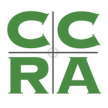Here’s what you need to know about conducting a cost segregation on your property.
As a commercial property owner, one of the ways that you can reduce your operating costs is by conducting a cost segregation on your property. A cost segregation identifies assets and costs within a property with the intent of accelerating depreciation. While this might not sound like a great idea, in reality, this actually generates cash flow for the property owner. Curious to learn more about this process? Then here’s what the experts at California Commercial Realty Advisors, Inc. have to report about the cost segregation process.
The Value of Cost Segregation
A cost segregation is a tax strategy that helps real estate investors identify which pieces of their property can depreciate faster. Allowing certain assets to depreciate faster gives the property owner a chance to write off these pieces more rapidly, effectively lowering upfront tax liability. These tax savings introduce a new source of cash flow for the real estate investor.
Performing a Cost Segregation
When you conduct a cost segregation, you will break down the collective assets on your property into the following four categories for tax purposes:
- Land– When you first buy a property, you must determine the value of the land. Because land never depreciates, it’s must be separated out from the purchase price of the property to determine the land improvements that will depreciate.
- Land Improvements– Improvements, such as landscaping, roads, and fences, are examples of land improvements. These components must be separated out to determine the depreciable basis of the property’s improvements.
- Tangible Personal Property– This refers to assets that are not structural components of the building. Typically, these assets depreciate faster than the building itself. This category encompasses things like office furniture, floor coverings, some electrical components, and fixtures.
- Buildings– This refers to structural components of a building. These components usually remain as a 39 or 27.5-year depreciation track, but the cost segregation process should qualify individual parts such as roofing, elevators, and boilers, that may need to be replaced individually.
In conclusion, conducting a cost segregation can help property owners depreciate certain assets more rapidly, which will help them save money on their taxes. Interested in more strategies for reducing your property’s operating costs? If so, then turn to the experts at California Commercial Realty Advisors, Inc. for the commercial real estate advice that you need.



Leave A Comment